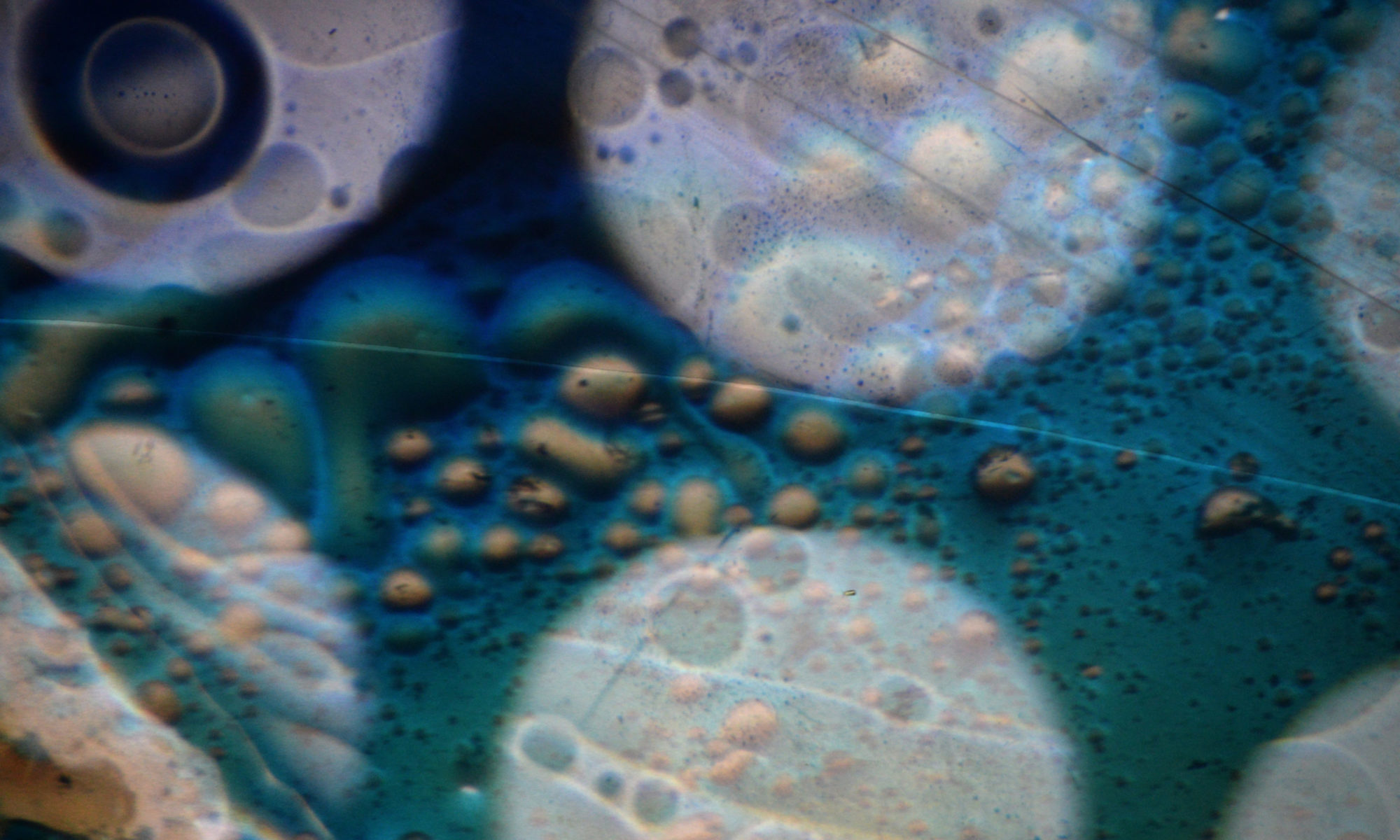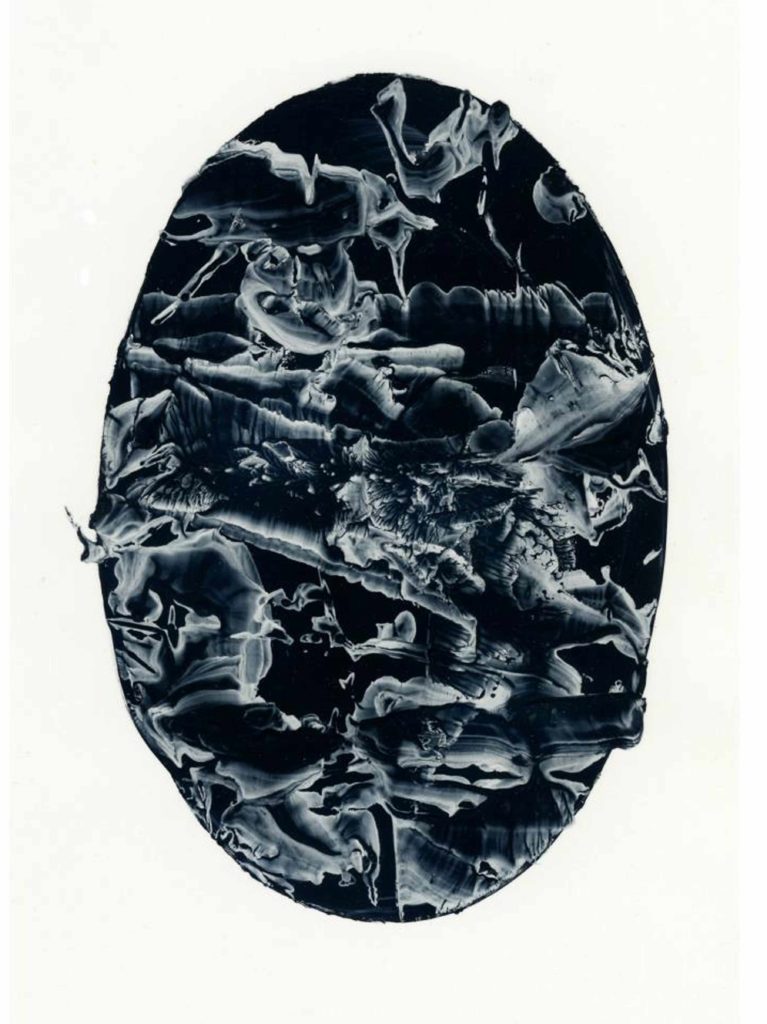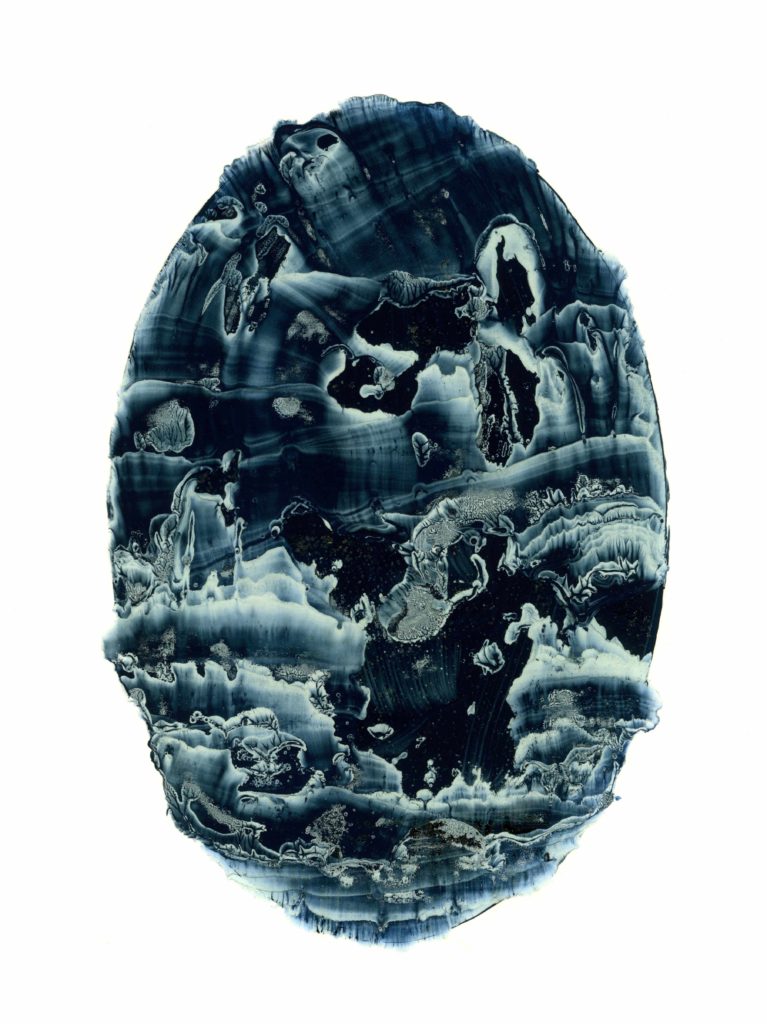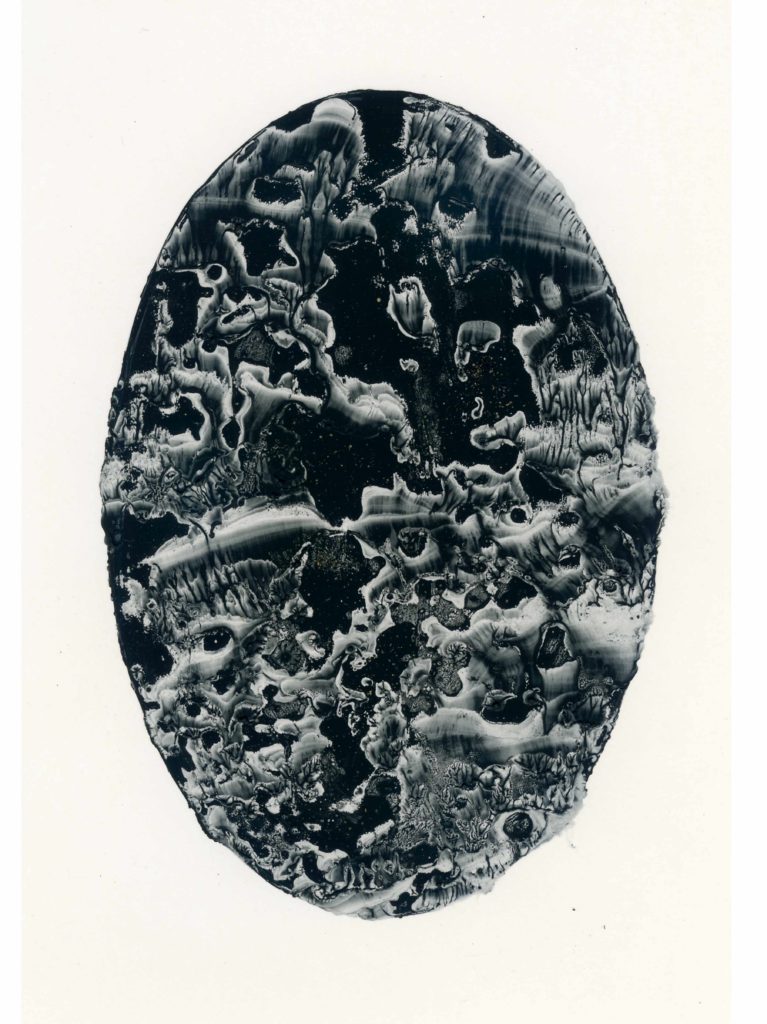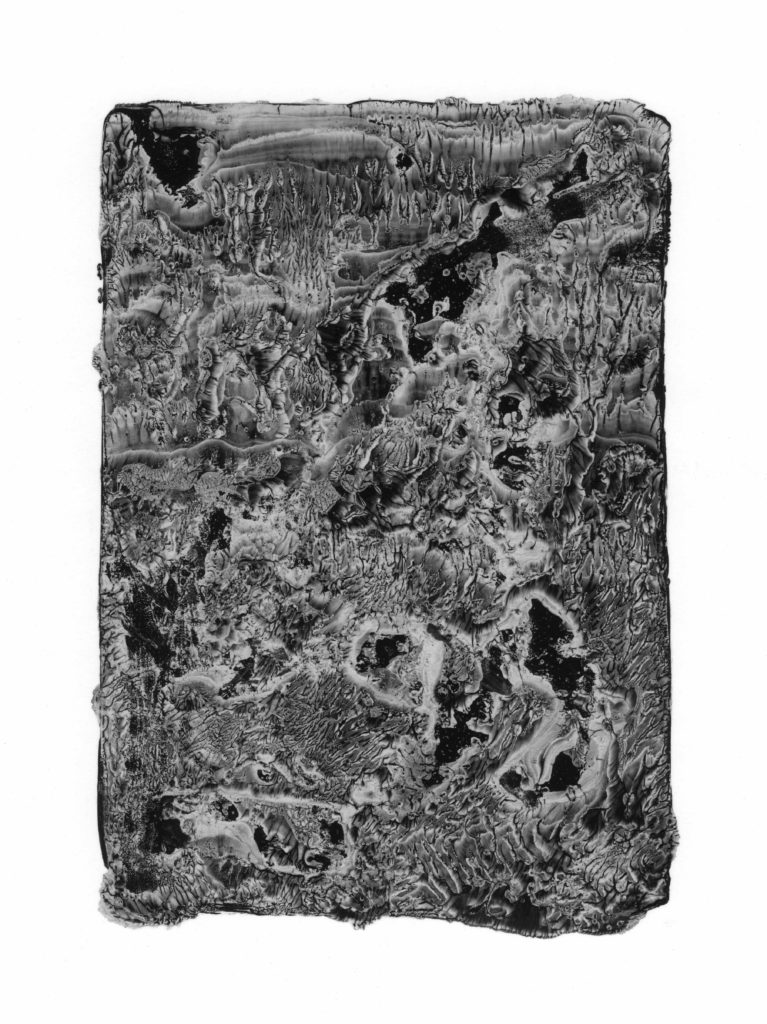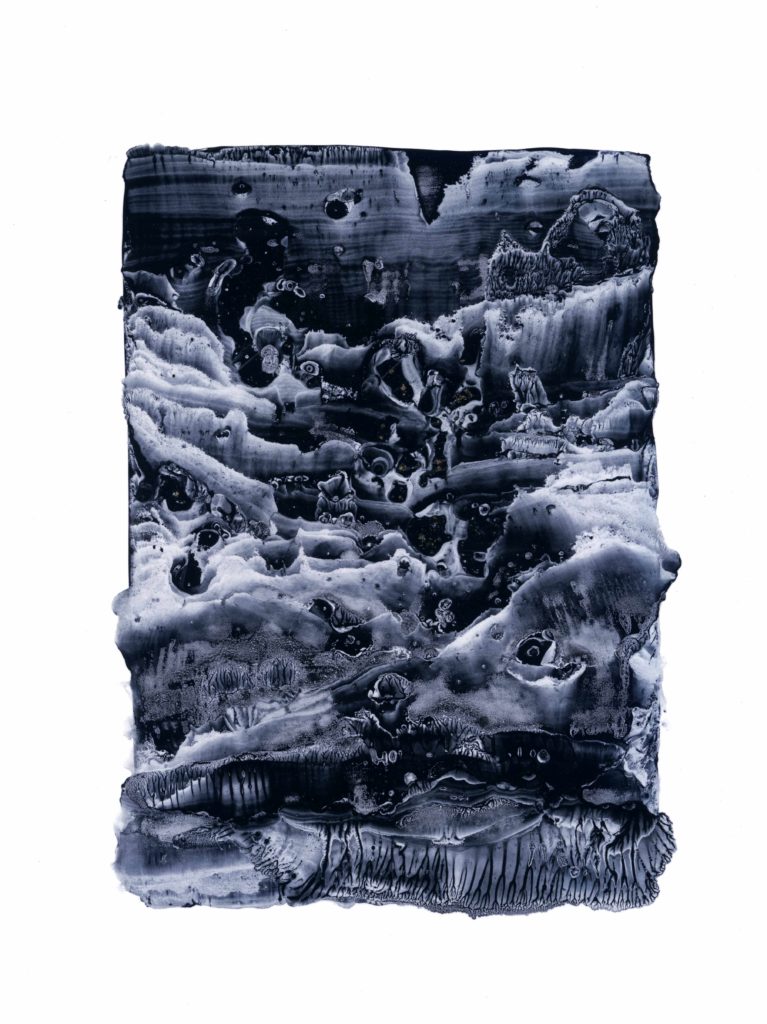デカルコマニー (Décalcomanie)
紙と紙の間などに絵具を挟み、再び開いて偶発的な模様を得る技法で、「仏: décalquer」(転写する)に由来する。元は陶器やガラスの絵付け技法であったが、オスカー・ドミンゲスが絵画に導入した。
シュルレアリスムの画家たちの間では、フロッタージュなどとともにオートマティスムの一つの手法として広まり、特にマックス・エルンストによる作品が著名である。 ウィキペディア(Wikipedia)より引用
日本にシュルレアリスムを紹介した美術評論家・瀧口修造のデカルコマニー作品に感銘をうけた私は、焼き損じた大量の写真用印画紙の裏を使い、半年間、夜な夜なBrian Enoのアンビエントを聴きながらデカルコマニーを製造していた。
手持ちの印画紙が無くなると、写真を焼く為ではなくデカルコマニー製造の為に新しい印画紙を購入した。
コーティングされたRC印画紙(裏面)は、インクのはじけ方が独特で、
現れるデカルコマニー像もどこか写真に似た特徴を持っている。
インクが流れる瞬間の記録という点でも、写真的かもしれない。
Décalcomanie
A technique in which paint is placed between sheets of paper and then reopened to create an accidental pattern, derived from the French word “décalquer” (to transfer). Originally a technique for painting pottery and glass, it was introduced to painting by Oscar Dominguez.
It became popular among Surrealist painters as a form of automatism, along with frottage, and is particularly famous for the works of Max Ernst. From Wikipedia (in Japanese)
Impressed by the decalcomanias of Shuzo Takiguchi, the art critic who introduced Surrealism to Japan, I spent six months making decalcomanias using the backs of a large amount of unburned photographic paper, listening to Brian Eno’s ambient music at night.
When I ran out of photographic paper, I bought new paper, not for burning photographs, but for making decalcomanias.
The coated RC photographic paper (back side) had a unique way of splashing ink.
The decalcomanias that appear are somewhat similar to photographs.
The decalcomania image that appears is somewhat similar to that of a photograph. It may also be photographic in that it records the moment when the ink flows.
